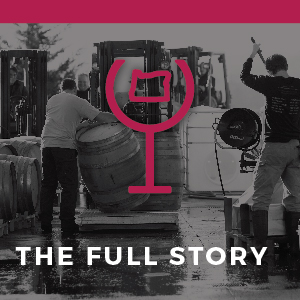Tualatin Hills
Established: 2020
Total Area: 144,000 acres (58,275 ha)
Planted Area: 970 acres (395 ha)
Predominant Soils: Loess (Laurelwood series)
Predominant Varieties: Pinot noir, Pinot gris and Chardonnay

Tualatin Hills downloads

by owbconnect
by owbconnect
by owbconnect
by owbconnect
Cole Danehower—wine writer, James Beard award winner and great friend of Northwest wine—had it right: Great Wine = (Place + Plant) x People. Few places in the world maximize that equation the way Oregon does. It’s not just our perfect location—the languid summer days, breezes sweeping in from the Pacific, primordial soils making vines struggle and develop complex flavors. And it’s not just that we’ve invested in decades of painstaking research about which grapes thrive best in which areas, under what conditions. It’s that our winemakers, despite their successes, have never rested on their laurels. They welcome feedback and collaborate to share advances, but always maintain a fierce independence, determined to make distinct wines that reflect their land, their grapes, what this year has brought. Wine enthusiasts recognize quality when they taste it, and in Oregon that quality comes from hand-tended vines, small-scale production and thoughtful winemakers dedicated to their craft.


by owbconnect
Established: 1984
Planted Area: 9,010 acres (3,645 ha)
Predominant Soils: Loess, sandy silts, loams
Predominant Varieties: Riesling, Chardonnay, Cabernet Sauvignon, Merlot, Syrah, Sauvignon blanc, Pinot gris, Gewürztraminer, Cabernet Franc, Viognier


The Columbia Valley AVA is a very large growing region with 11 million acres (4.5 million ha) of land in total. Most of the Columbia Valley lies in Washington State, with a small section in Oregon stretching from The Dalles to Milton-Freewater. The region is 185 miles (300 km) wide and 200 miles (320 km) long.
The Columbia Valley has a largely continental high desert climate. The hot days promote slow, even ripening, while the cool nights ensure that grapes retain their natural acidity. The area receives just 6-8 inches (15-20 cm) of annual rainfall, making supplemental irrigation a necessity throughout the region.
Roughly 15,000 years ago a series of tremendous Ice Age floods (dubbed the Missoula Floods) deposited silt and sand over the area. These deposited sediments, along with wind-blown loess sediment, make up the area’s present-day soils, which are well drained and ideal for grapevines.
Region History:
On the Oregon side, the Columbia Valley wine history dates back to the early 1900s, when settlers planted the area’s first vineyard on a steep, south-sloping hill near the small town of The Dalles. These Zinfandel vines, which are now more than 100 years old, still produce wine grapes at what is today known as The Pines 1852 Vineyard, whose vintner revitalized the land in the early 1980s. Around that time, as the Washington side of the Columbia Valley appellation began to flourish with large-scale wineries, reputable winemakers started tagging the small Oregon side as an excellent location for high-quality wine grapes. The appellation became official in 1984.
by owbconnect
Established: 2004
Total Area: 58,100 acres (23,500 ha)
Planted Area: 2,405 acres (970 ha)
Predominant Soils: Marine sedimentary (Willakenzie series)
Predominant Varieties: Pinot noir, Pinot gris and Chardonnay


The Yamhill-Carlton AVA is contained within the Willamette Valley AVA and is located 35 miles (56 km) southwest of Portland and 40 miles (64 km) east of the Pacific Ocean. The region is bordered by the Coast Range to the west, Chehalem Mountains to the north and the Dundee Hills to the east. These barriers provide protective cover from extreme weather resulting in warmer temperatures and the earliest harvest dates in the Willamette Valley. The warmer mesoclimate produces ripe, texturally driven wine with an abundance of spice and floral qualities layered onto dark fruit flavors.
Yamhill-Carlton has the oldest soil and parent material in the Willamette Valley. It is comprised of coarse grained ancient marine sediments that drain quickly, making it ideal for viticulture. The dominant soil series above the siltstone and sandstone parent material are Melbourne, Wellsdale and Goodin with lesser influences of Dupee and Willakenzie.
Region History:
Yamhill-Carlton was once known for fruit tree orchards, nurseries, livestock, wheat fields and logging. In 1974, the pioneers Pat and Joe Campbell planted Elk Cove Vineyard and Roy and Betty Wahle planted Wahle Vineyard. Elk Cove went on to produce the first commercial wine from the area.
The Yamhill-Carlton American Viticultural Area was officially established in 2005.
The Yamhill-Carlton Winegrowers Association initiated, and in concert with Chemeketa College curriculum writers, Future Farmers of America Alumnae and the Yamhill-Carlton School District created the first high school viticulture program in the United States that include a commercial vineyard at the school and college level accreditation for all coursework. The association also funds college scholarships for students in the program.

